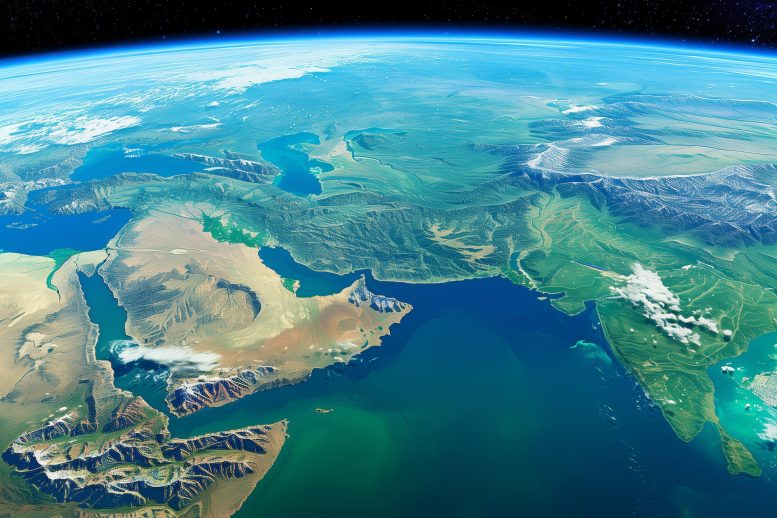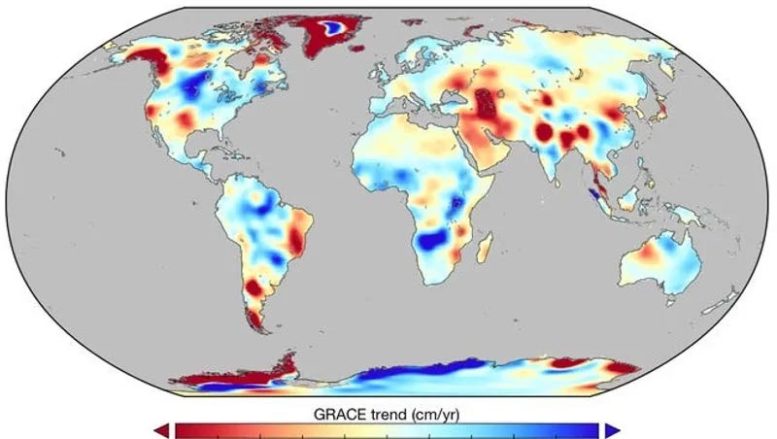
The researchers developed the Observing System Simulation Experiment (OSSE) to optimize the planning of scientific missions to monitor terrestrial freshwater storage, integrating various sensor technologies and modeling tools such as NASA’s LIS and TAT-C. Credit: SciTechDaily.com
OURThe OSSE tool helps plan dynamic Earth observation missions, with cost estimates and the ability to include different types of space-based sensors.
From radar instruments smaller than a shoebox to radiometers the size of a milk carton, scientists today have more tools available to observe Earth’s complex systems than ever before. But this abundance of available sensors creates its own unique challenge: How can researchers organize these diverse instruments in the most efficient way for field campaigns and science missions?
Improving science missions
To help researchers maximize the value of science missions, Bart Forman, associate professor of civil and environmental engineering at the University of Maryland, and a team of researchers from the Stevens Institute of Technology and NASA’s Goddard Space Flight Center, built a prototype simulation of the Observing System Experiment (OSSE ) to design scientific missions dedicated to the monitoring of terrestrial freshwater reservoirs.
“You have different types of sensors. You’ve got radars, you’ve got radiometers, you’ve got lidars — each one measures different components of the electromagnetic spectrum,” said Bart Forman, associate professor of civil and environmental engineering at the University of Maryland. “Different observations have different strengths.”

Map depicting freshwater accumulation (blue) and loss (red), using data from NASA’s Gravity Recovery and Climate Experiment (GRACE) satellites. The new Observing System Simulation Experiment (OSSE) will help researchers design science missions dedicated to monitoring terrestrial freshwater reservoirs. Credit: NASA
Observation of a dynamic system
Terrestrial freshwater storage describes the integrated sum of freshwater spread across the Earth’s snow, soil moisture, vegetation canopy, surface water reservoirs, and groundwater. It is a dynamic system, one that defies traditional, static systems of scientific observation.
Forman’s project builds on previous technological advances he made during an earlier Earth Science Technology Office (ESTO) project, in which he developed an observing system simulation experiment for terrestrial snow mapping.
It also draws heavily on innovations pioneered by NASA’s Land Information System (LIS) and NASA’s Trade-space Analysis Tool for Designing Constellations (TAT-C), two modeling tools that began as ESTO investments and quickly have become mainstream in the earth science community.
Advanced mission planning
Forman’s tool incorporates these modeling programs into a new system that provides researchers with a flexible platform for planning dynamic observational missions involving a diverse collection of space-based data sets.
In addition, Forman’s tool also includes a “dollars-to-science” cost estimator that allows researchers to assess the financial risks associated with a proposed mission.
Together, all these features give scientists the ability to link observations, data assimilation, uncertainty assessment, and physical models within a single, integrated framework.
“We took a land surface model and tried to combine it with different space-based measurements of snow, soil moisture and groundwater to see if there was an optimal combination that would give us the most bang for our science buck,” Forman explained.
A joint effort
Although Forman’s tool is not the first information system dedicated to science mission design, it includes a number of new features. In particular, its ability to integrate observations from space-based passive optical radiometers, passive microwave radiometers, and radar sources marks a significant technological advance.
Forman explained that while these indirect freshwater observations include valuable information for quantifying freshwater, each also contains its own unique error characteristics that must be carefully integrated with the land surface model to provide estimates of the geophysical variables that scientists care about most. .
Forman’s software also combines LIS and TAT-C within a single software framework, extending the capabilities of both systems to create superior descriptions of global terrestrial hydrology.
Indeed, Forman emphasized the importance of having a large, diverse team that includes experts from across the Earth science and modeling community.
“It’s nice to be part of a big team because these are big problems, and I don’t know the answers myself. I need to find a lot of people who know a lot more than I do and get them to jump in, roll up their sleeves and help us. And they did,” said Forman.
Future directions
By creating an observing system simulation experiment that can incorporate dynamic, space-based observations into mission planning models, Forman and his team hope that future researchers will build on their work to create an even better mission modeling program.
For example, while Forman and his team focused on generating mission plans for existing sensors, an expanded version of their software could help researchers determine how they might use future sensors to collect new data.
“With the kinds of things TAT-C can do, we can create hypothetical sensors. What if we double the swath width? If he can see twice as much space, does that give us more information? At the same time, we can ask questions about the impact of different error characteristics for each of these hypothetical sensors and explore the appropriate trade-off.” Forman said.
NASA’s Advanced Information Systems Technology (AIST) program, part of NASA’s Earth Science Technology Office (ESTO), funded this project.